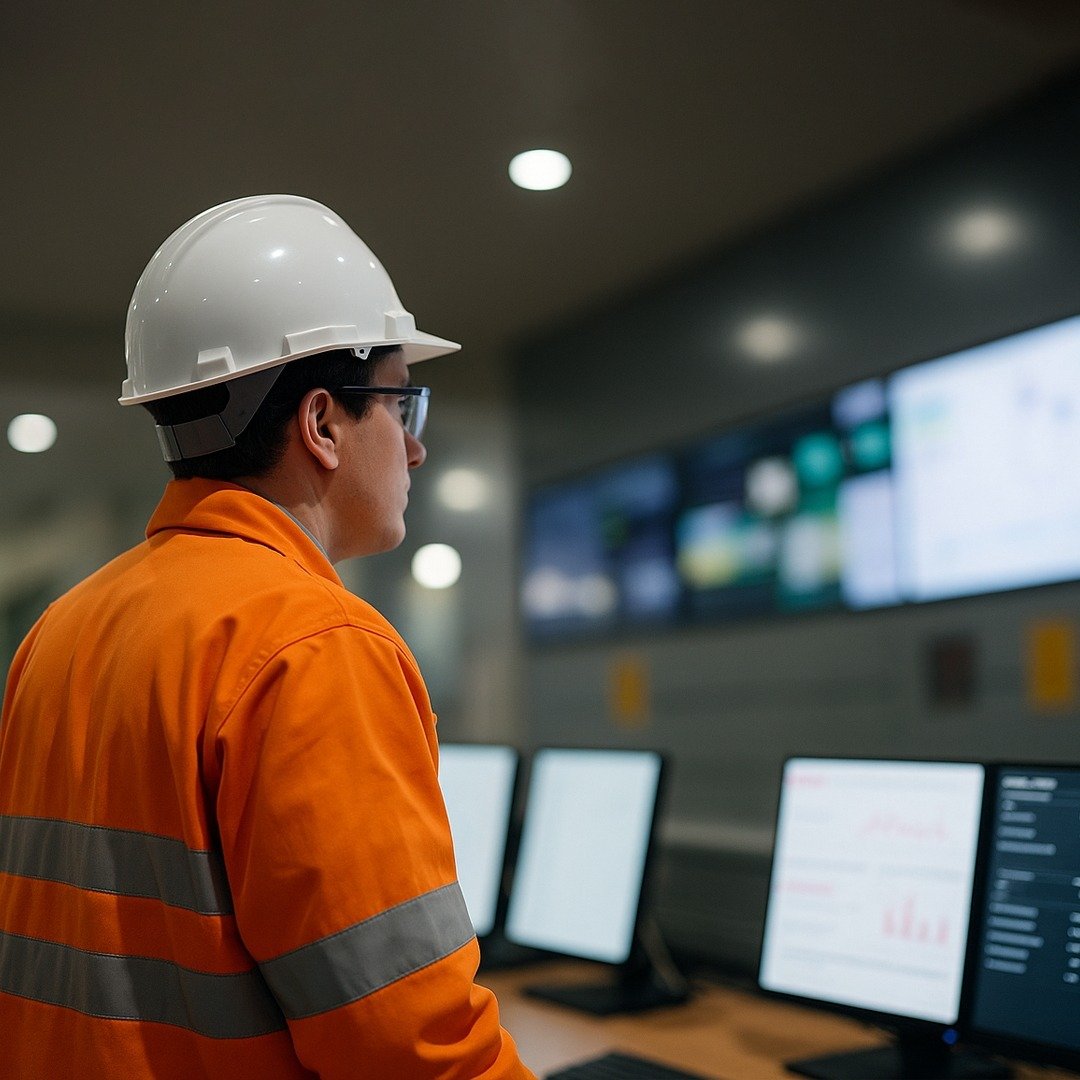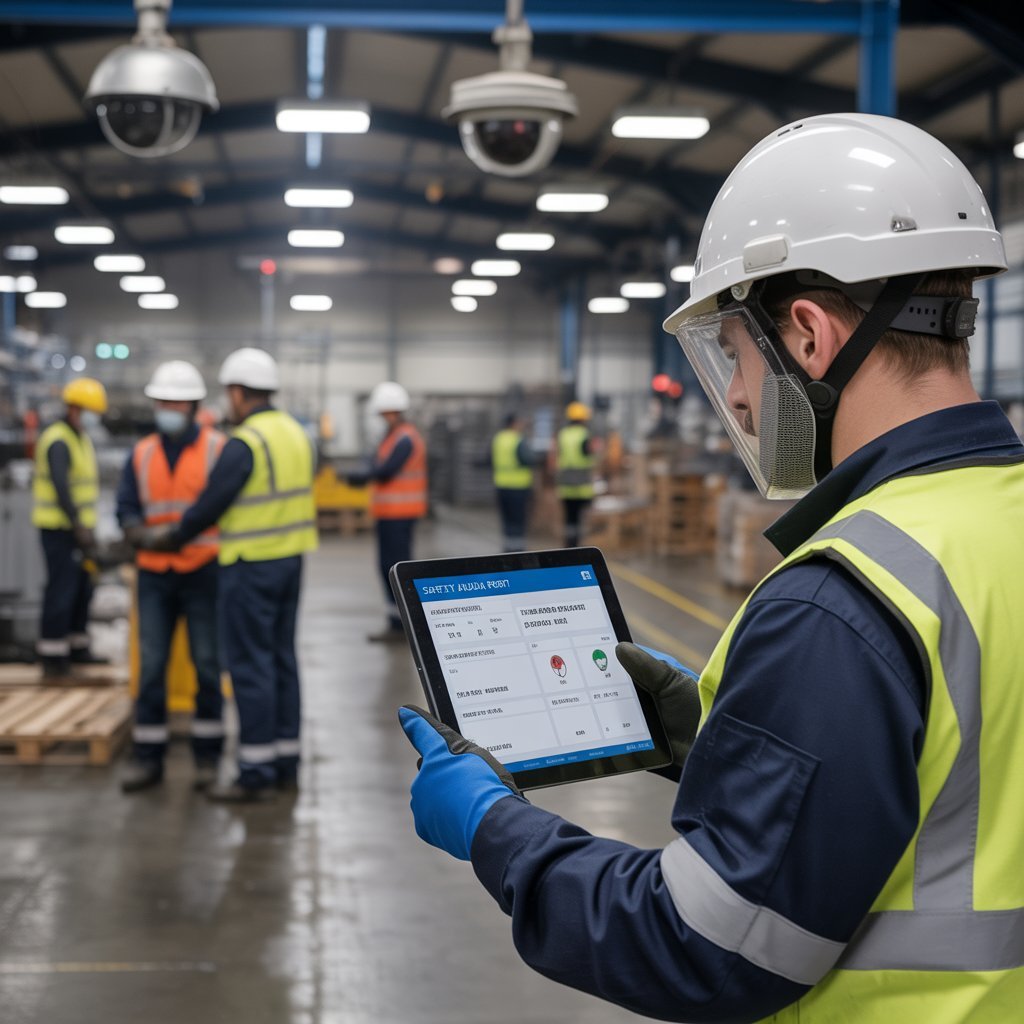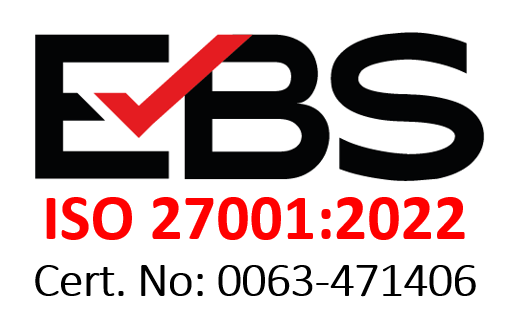AI for EHS management: How Vision AI is powering real-time safety, compliance, and workforce monitoring
Introduction: The Evolution of EHS with AI
Environment, Health, and Safety (EHS) programs are essential for protecting people and operations, especially in high-risk industries. Traditionally, EHS systems relied on manual checks and delayed reporting, which often failed to prevent incidents in time.
Today, AI for EHS management is shifting this approach from reactive to real-time. Using computer vision and automated detection, AI makes it possible to spot PPE violations, unsafe actions, and hazards as they happen. At The Disrupt Labs, we develop intelligent AI-powered CCTV solutions that modernize EHS compliance, empowering teams to act faster, reduce risk, and build safer workplaces.
The Role of AI in Advancing EHS Systems
The EHS system is all about a safe and healthy workplace. Whereas the traditional EHS systems were mostly concerned with manual tasks, they did not provide the speed and accuracy that was required for high-risk environments. In recent years, the AI in EHS management is transforming and it is now capable of detecting the absence of helmets, safety boots, and other personal protective equipment in real-time. Moreover, it can be useful in emergency modules like detection of person count in emergency situations along with monitoring restricted areas.
Rising Need for Automation, Data, and Accuracy in EHS Programs
As the world is evolving, the older EHS programs are becoming outdated, and to keep up with the modern world, EHS must also be upgraded. This upgrade is done by introducing AI cameras that track real-time risks, automate the safety process, and give safety violation alerts. Industries are increasingly turning to AI for EHS management to streamline safety processes, reduce human error, and maintain regulatory compliance.
How AI for EHS management is transforming industrial safety
AI for EHS management is transforming industrial safety by shifting from reactive protocols to real-time, automated solutions. Instead of waiting for incidents to occur, AI systems now monitor PPE compliance, detect unsafe behaviors, and identify hazards instantly. This proactive approach helps prevent accidents, reduce downtime, and support a culture of continuous safety. At The Disrupt Labs, our AI-powered CCTV systems empower industries to strengthen compliance, improve response times, and create smarter, safer workplaces.
What Is AI in EHS?
AI for EHS management brings intelligence to routine safety operations by analyzing workplace visuals and behaviors in real time. It helps spot hidden risks, reduce delays in response, and enforce compliance without constant manual oversight. At The Disrupt Labs, our solutions are built to align with regulatory needs and practical safety challenges supporting smarter, more consistent EHS compliance through AI-powered CCTV systems.
For example, it ensures that protective safety guards (like shields, barriers, or covers) are properly used and also instantly sends alerts if any issue is detected. Furthermore, it can also observe situations like electrical panels being left open, which can cause fire hazards, electric shocks or short circuits.
Overview of AI in EHS: predictive analytics, and risk assessment
AI has transformed a major change in the EHS program. With the help of modern technology like computer vision, manual inspections that are time consuming and have a high chance of human error are becoming obsolete. AI-powered CCTV cameras are now using advanced techniques such as predictive analysis and risk assessment.
These techniques help in forecasting potential safety incidents before they are even caused and also identify and evaluate the existing risk to reduce hazards in the future. As there is increasing concern about industrial dangers, companies now are using AI to prevent environmental incidents and to identify hazards before their escalation.
How AI Enhances Traditional EHS Systems with Real-World Use Cases
AI in EHS management is making things much quicker, accurate, and real-time. AI systems detect unsafe behavior, the absence of PPE, forklift proximity, and control access to restricted zones. Here’s how AI enhances traditional EHS systems in different industries:
1- Manufacturing and Warehouse: When the AI cameras detect factors that cause risks of injuries, such as using a welding machine without safety glasses, they instantly send the alerts.
2- Oil & Gas: The AI can be used to detect oil and water spills and alert the team prior to the occurrence of any incident of slip, trip, or fall.
3- Constructions: When the workers are at heights, AI will confirm that the workers are wearing safety harnesses so as to avoid accidents in their timely occurrence, keeping the workforce safe.


Workforce Monitoring with Vision AI
AI-powered CCTV systems now make it possible to observe workforce behavior with accuracy. Through real-time compliance monitoring with Vision AI, potential risks like PPE violations, or zoning breaches are identified instantly before they lead to incidents. This smart surveillance empowers safety teams to stay proactive, reinforces accountability, and builds a stronger safety culture across industrial sites.
AI cameras analysing unsafe behaviour
AI-powered cameras monitor all the activities to detect the unsafe behaviors. It can analyze the absence of the proper PPE among the workers, hazards like oil or water spills on the floor, or forklift person proximity. With the use of AI in EHS, it recognizes the patterns, identifies unsafe activities, and provides a faster reaction to prevent incidents.
Preventing incidents before they happen
AI for EHS management is redefining how industrial safety is approached by focusing on prevention, not just response. Through real-time compliance monitoring with Vision AI enables early detection of unsafe conditions such as PPE violations, forklift hazards, or blocked walkways. These AI-powered systems issue instant alerts, helping safety teams resolve issues before they escalate into incidents. It’s a smarter, faster way to protect both workers and operations.
AI Safety in Warehouses
Warehouses are high-risk zones where minor oversights can lead to serious accidents. From improperly parked forklifts to unnoticed oil spills or blocked emergency exits, these hazards often go unchecked in fast-paced operations. AI-powered CCTV systems enhances forklift safety and offer a smarter way to manage warehouse safety using real-time video analysis to detect and alert for unsafe behaviors as they happen. This AI for EHS management approach helps facilities maintain compliance, reduce response time, and prevent incidents altogether.
Preventing forklift collisions, detecting spills, and people-zone intrusions:
The use of AI in EHS management is transforming how companies organize the workplaces by monitoring the risks of unsafe practices in real time. Examples of the effectiveness of AI in enhancing safety in warehouses include:
1- AI cameras are placed in the warehouse that monitor all movements of the forklifts and send an immediate warning in case a collision is possible.
2- AI can identify spills or leakage on the floor at warehouses, which can lead to slips of the workers. It identifies and alerts the supervisor in order to avoid any accident.
3- There are a few areas in large warehouses that are accessible to only authorized personnel. In this case, if any unauthorized worker attempts to enter that restricted space, AI-powered CCTV cameras identify and warn them.
Examples of AI improving safety in high-traffic warehouse environments
AI in EHS management systems helps in improving safety with the use of AI-enhanced CCTV cameras, busy areas are in continuous monitoring for any unusual activity. It detects the forklift’s proximity and wrong parking along with this, it makes sure that no forklift and person are in the same aisle.These real-world AI safety use cases show how computer vision supports safer, smarter workplaces.
Conclusion
As industries grow smarter, safety standards must evolve with them. Relying on outdated, reactive safety systems is no longer enough especially in environments where a single oversight can lead to serious consequences. This is where AI for EHS management becomes a game-changer.
AI-powered CCTV systems go beyond surveillance, offering intelligent support for safety teams and helping organizations stay ahead of risks. By embedding AI into EHS strategies, businesses can build safer environments and boost regulatory compliance. Ready to move from manual checks to smart safety? Schedule a demo today.
Frequently Asked Questions
With the help of video analytics, AI-powered CCTV cameras can easily spot unusual actions like missing PPE, usage of a phone during machine operations, or entering restricted areas.
Yes. SMEs can enhance their safety and compliance by using AI safety solutions.
AI helps in faster inspection, it is more accurate and gives real-time insights.
Real-time compliance monitoring with Vision AI means using smart cameras to instantly detect and alert on safety violations as they happen in the workplace.

